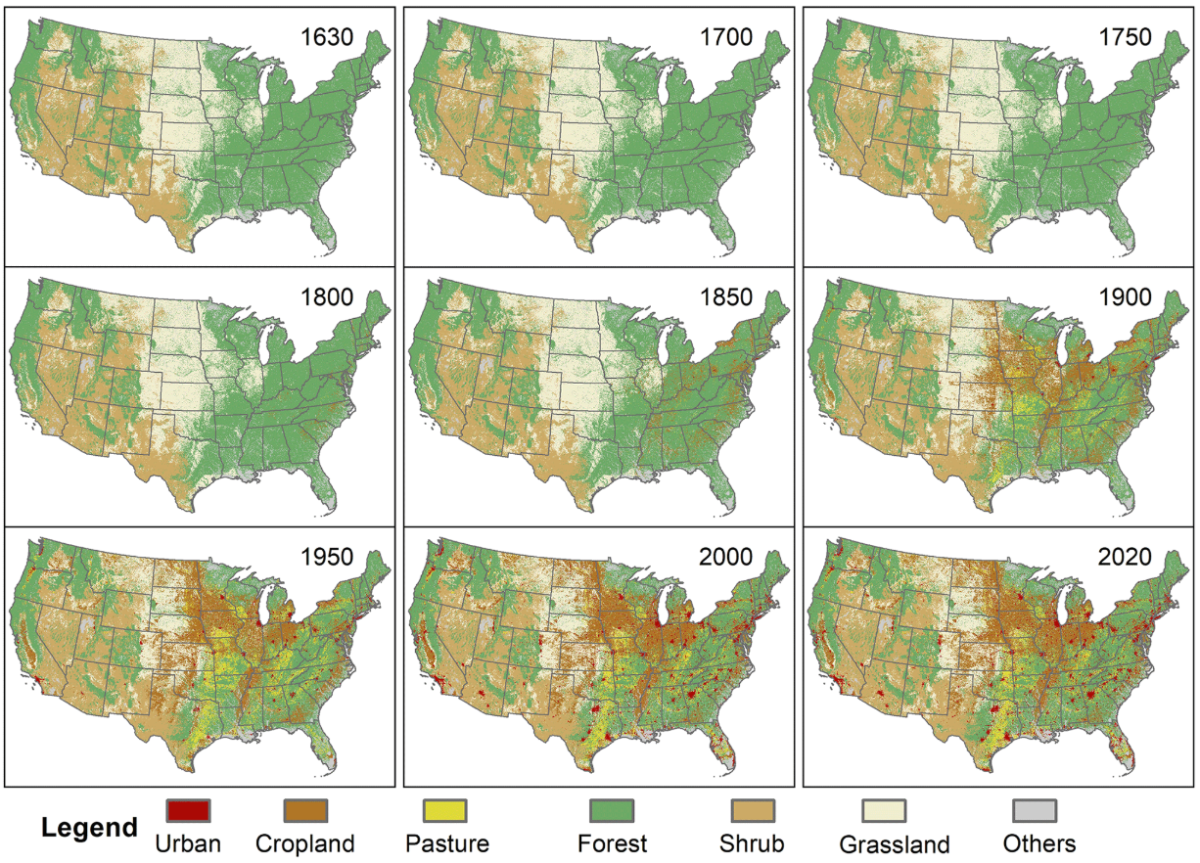In the past four centuries, the United States have undergone a dramatic transformation, with huge pieces of Bosland that make way for agriculture, urban development and industry.
Once covering a significant part of the country, forests have been steadily shrinking since the 1600s, while the human settlement expanded to the west.
New research by the data from the Earth System Science reveals the size of this decline, which shows how dense forests have been replaced by field countries, meadows and vast cities.
Why it matters
The research comes when Donald Trump has signed a new executive order this month to reduce American dependence on foreign wood.
The order can lead to cutting millions of trees in the US
What to know
The forests of America have undergone significant changes in recent centuries, formed by deforestation, urbanization, agriculture and nature conservation initiatives. As soon as it covers more than a billion hectare, the wooded land of the nation has fallen dramatically due to human activity.
A map published by Earth System Science data shows the dramatic decrease of land covered with forest in the United States since the 17th century.
Before the European settlement in the early 1600s, forests covered an estimated 1,023 billion hectares of what is now the United States. The eastern part of the country was heavily forested, while the large plains and western regions contain enormous vast grasslands and shrubs. Large -scale deforestation, however, started in the 19th century, powered by agriculture, industrial logging, mining, railway extension and urban growth. By 1860, around 153 million hectares of forest was cleared for agriculture, with a further 11 million hectare lost in industrial activities, in particular in the Eastern States. By 1920 the American forest cover had reached the lowest point at around 721 million hectares.
Recognizing the alarming loss of forests, the US government and conservationists have made efforts to protect and restore forest areas at the beginning of the 20th century. National forests were established and policy that promoted sustainable forestry practices were introduced. By the mid -1900s, deforestation was delayed and the abandoned agricultural land had some forests regenerated naturally. Recovery programs also helped to reduce previous losses, which led to a more stable forest area.

Data from the Earth System Science data
Today, the US has an estimated 765 million hectares of Bosland, with around 33 percent of the total land surface in the country. Although the general wooded area has remained relatively stable in the last century, new challenges are threatening nowadays these ecosystems such as climate change, forest fires, outbreaks of diseases and continuous urbanization.
Since the early 1600s, the US has experienced a net loss of around 258 million hectares of forest.
And that number could be set to increase in the midst of the recent executive order of Trump, so that the US Department of the Interior and the Ministry of Agriculture can bypass the ACT protection of the Endangered Species Act to increase the sale of the wooden, which ultimately results in the clear massive tracts of federal forests.
The aim of the executive order is to reduce the dependence on the United States of foreign wood, in particular from Canada, which produces around 25 percent of the US carpentry. In 2022 alone, the US imported more than 12.7 billion board feet from Hout from Canada. For comparison: the US had around 765.5 million hectares of Timberland available for domestic production. To replace the volume of wood imported from Canada, about 17 million adult pine-trees-40 feet would be harvested from American forests with a diameter of 2 foot must be harvested.
This order comes in the midst of the growing tensions between the US and Canada, especially after President Trump had imposed significant rates on Canadian wood. These rates have tense and Trump has also made public comments that suggest that Canada could ever reach the US when the 51st is. The new executive order reflects efforts to reduce dependence on foreign imports and to strengthen domestic wood production, even if questions raise on the potential impact on the environment and the sustainability of such an approach.
What happens afterwards
The exact impact of the executive Order of Trump is still unclear, but it can lead to millions of trees being shortened and therefore a further decrease in the forest covered country in the US



